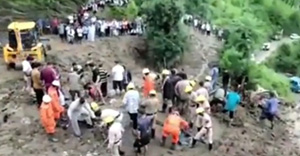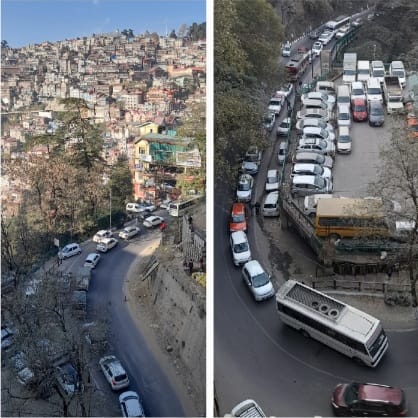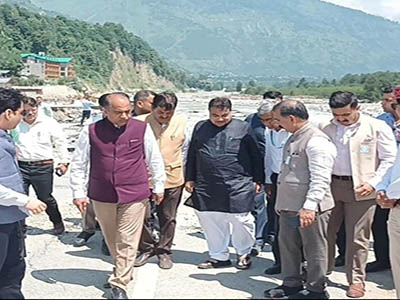Dharamshala/Shimla: Hardly a day goes by without debates, warnings, and concerns over the state of our fragile Himalayan ecosystem. Yet, the gravity of the danger seems lost on policymakers and society alike.
With reckless disdain, we continue to invite natural calamities and environmental destruction, leaving future generations to face an apocalyptic reality.
Ravaged Forests, Rampant Mining
Despite decades-old forest moratoriums, the plunder of Uttarakhand and Himachal Pradesh’s green lungs continues unabated.
Illegal timber smuggling, once the dark underbelly of environmental crime, has now given way to the more overt, politically-backed mining mafia.
Truckloads of sand and stone are ripped from rivers and streams, fueling the construction of soulless concrete jungles.
In the face of this destruction, the voices of forest martyrs and environmentalists, like the late Sunderlal Bahuguna and Chandi Prasad Bhatt, echo faintly as warnings unheeded.
Dying Rivers, Diminishing Snow
Our rivers, once lifelines of culture and agriculture, now resemble polluted drains.
The natural rhythm of snow-fed rivers has been disrupted by rapid glacial retreat, a direct consequence of climate change.
Farmers watch helplessly as their fields parch, praying for the rains and snowfalls that rarely come. The once-majestic Himalayas are losing their icy crowns, revealing the scars of human greed.
Development or Devastation?
Union Minister Nitin Gadkari’s ambitious infrastructure claims ring hollow against the reality of ecological collapse in the mountain states.
Highways and tunnels snake through fragile ecosystems, triggering landslides and flash floods.
In Uttarakhand’s Auli, debates over unchecked tourism development in fragile alpine meadows further underscore the tension between progress and preservation.
Shimla, once the 'Queen of Hills,' now lies ravaged.
High-rise buildings have defaced its skyline, and green zones have been sacrificed to urban sprawl.

It’s a sad reflection of Milton’s Paradise Lost, where greed overshadows beauty, leaving the hills scarred and weary.
A Choking Reality
Himachal and Uttarakhand, once pristine havens, now grapple with overwhelming vehicular pollution.
Exhaust fumes and noise disrupt the serenity of hill stations, driving away wildlife and choking residents.
Roads, rivers, and even the air are clogged, symbolizing the unsustainable weight of unchecked tourism and urbanization.
Forgotten Lessons, Grim Warnings
The prophetic wisdom of Mahatma Gandhi—“The world has enough for everyone’s need but not enough for everyone’s greed”—and the United Nations’ call to live “as part of nature, not apart from it,” seem like whispers in a storm.

Our collective failure to safeguard these natural treasures has left the Himalayas teetering on the brink.
An Urgent Call to Action
The hills are screaming for respite. The rivers plead for rejuvenation.
The climate shows us frightening glimpses of the future. As guardians of this planet, it’s time we awaken to our responsibility before paradise is irreversibly lost.
The stakes couldn’t be higher. Will we heed these warnings or let the Himalayas perish under the weight of our greed?





